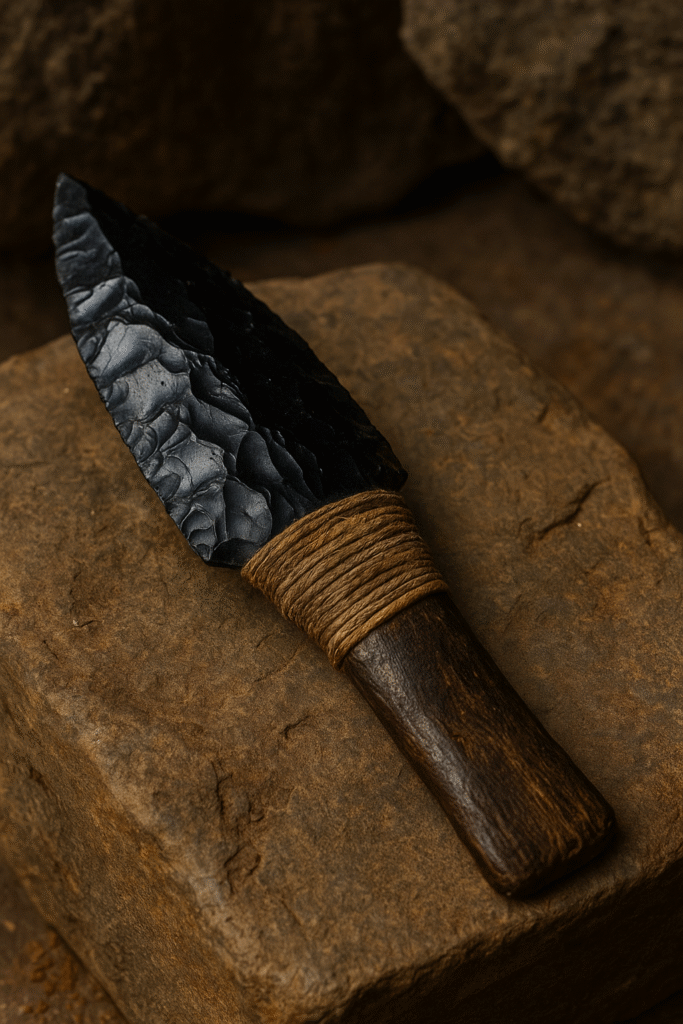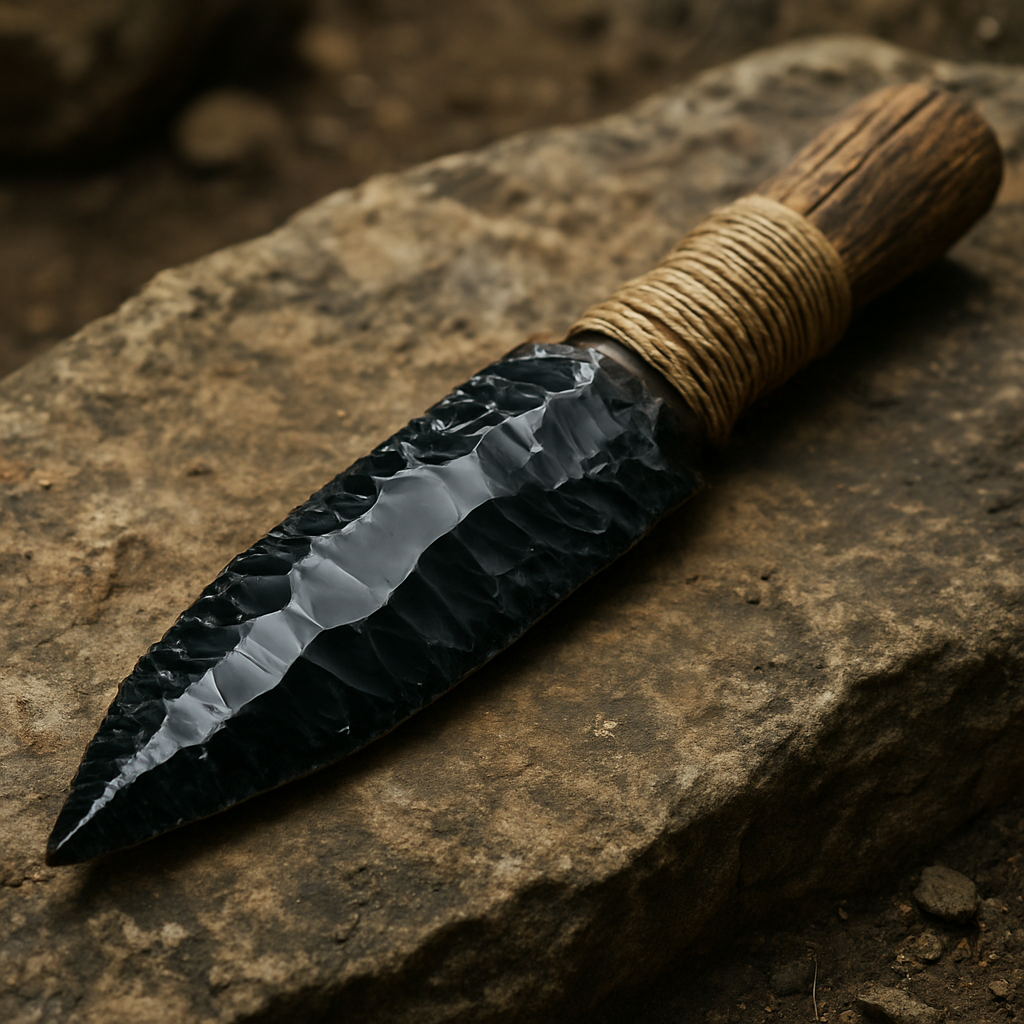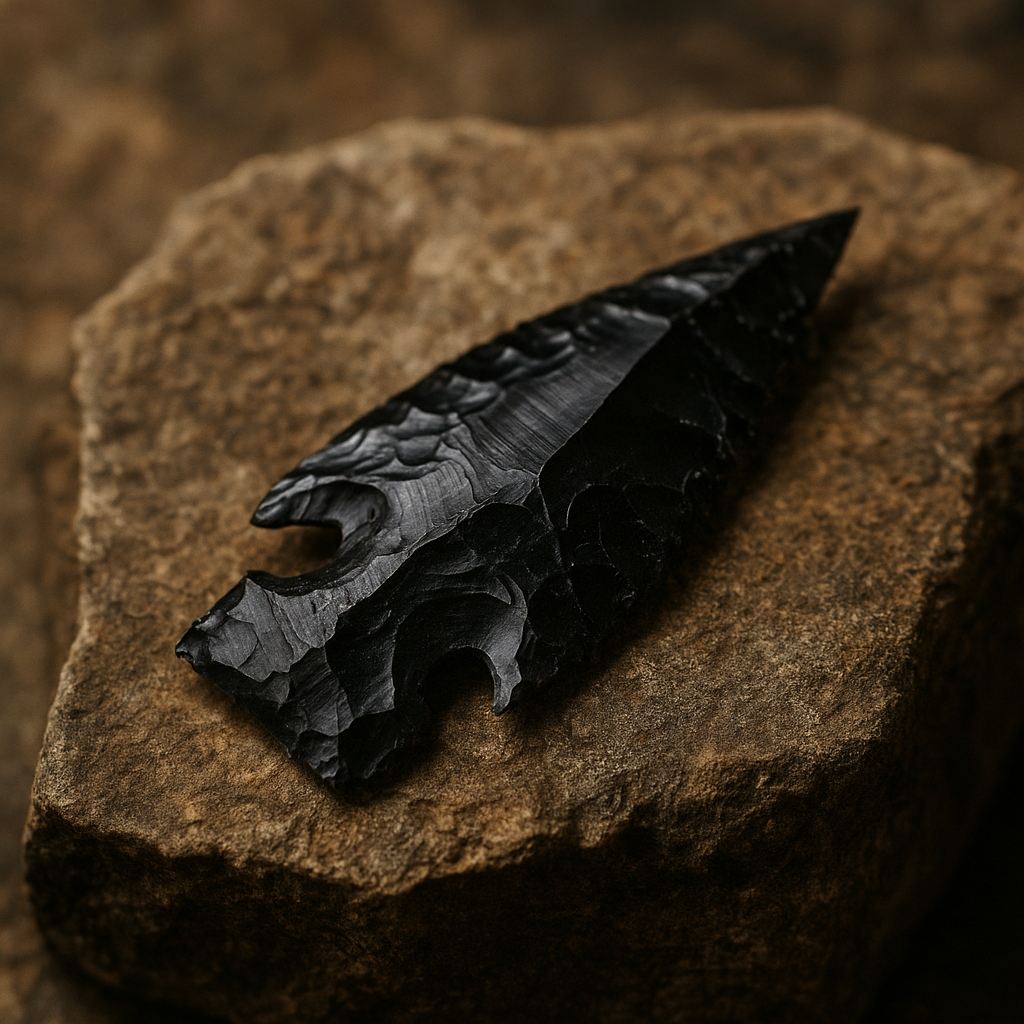Beneath the earth’s crust, forged in volcanic fire, lies a stone once prized above gold. Obsidian—dark, glassy, sharp enough to slice with surgical precision—was more than a material; it was the lifeblood of empires. To hold a shard of obsidian is to hold fire stilled, chaos crystallized into something both fragile and deadly.
A Blade from Fire
For millennia, obsidian weapons and tools shaped the fate of civilizations. In Mesoamerica, Aztec priests wielded blades carved from volcanic glass in ritual sacrifice, believing the stone to be the breath of the gods. In Anatolia and the Near East, early farmers used obsidian sickles to reap the first harvests of wheat, marking humanity’s transition from nomad to settler.

Its edges, molecularly sharper than steel, gave it a supernatural reputation. Warriors feared it. Priests revered it. Traders carried it across continents. Archaeologists today find caches of obsidian knives buried beside kings, as if no ruler dared cross into the afterlife unarmed.
Myth and Memory
Legends sprang up around the stone. The Maya saw obsidian as the mirror of Tezcatlipoca, the Smoking God, who revealed truth and fate in its glossy surface. To gaze upon it was to risk seeing not only the divine but also one’s own death. In Greece, volcanic glass was thought to be tears of the earth, crystallized grief from the planet itself.

In every culture, obsidian balanced duality: creation and destruction, protection and danger, beauty and terror. Its black gleam reflected both the promise of civilization and the shadow of violence it required to endure.
The Archaeology of Fire
Excavations from Turkey’s Çatalhöyük to the pyramids of Teotihuacan reveal how obsidian built networks of exchange. Stones quarried in distant mountains traveled hundreds of miles to appear in temples and tombs, proof of how ancient societies connected through commerce, conquest, and faith.
Yet obsidian was never just trade. It was identity, power, and cosmology. To carve obsidian was to speak the language of volcanoes. To wear it as jewelry was to carry the earth’s fury on your skin. To die beneath its blade was to return, symbolically, to the fire from which humanity was born.
Fragile Eternity
Today, obsidian knives sit behind glass in museums, stripped of their ritual weight. Their edges still glint, but the hands that once raised them are dust. And yet, their presence commands awe. Unlike bronze or iron, obsidian carries no corrosion. It remains as sharp as the day it was struck from the mountain, a frozen flame reminding us of a time when humanity’s mastery of nature came at the edge of a volcanic blade.
The Echo of Stone
The legacy of obsidian endures not in weaponry, but in metaphor. It embodies the contradictions of civilization itself—our ability to create tools of beauty and instruments of death, our yearning for eternity and our fear of fragility. In its black mirror, we see ourselves: reflections of ambition, of faith, of violence, of awe.

Obsidian whispers across centuries that humanity, for all its steel and silicon, still craves the fire of origins. Still longs for the edge where survival and meaning meet. And still, perhaps, fears what waits in the mirror of stone.


Reply